Rabbit breeds in Nigeria: How to identify them
Raising rabbits is becoming popular in Nigeria, especially for farming. It’s important to know about different kinds of rabbit breeds so you don’t end up purchasing the wrong one from what you have in mind.
This article is here to help you learn about the main types of rabbits you can find in Nigeria and how to tell them apart. Whether you’re just starting out or already know a bit about rabbits, this guide will make it easy for you to understand and identify different breeds. Let’s get started!
Major Rabbit Breeds in Nigeria
1. New Zealand White
This rabbit originated in – you guessed it – New Zealand! They were selectively bred in the early 20th century for their meat and fur qualities.
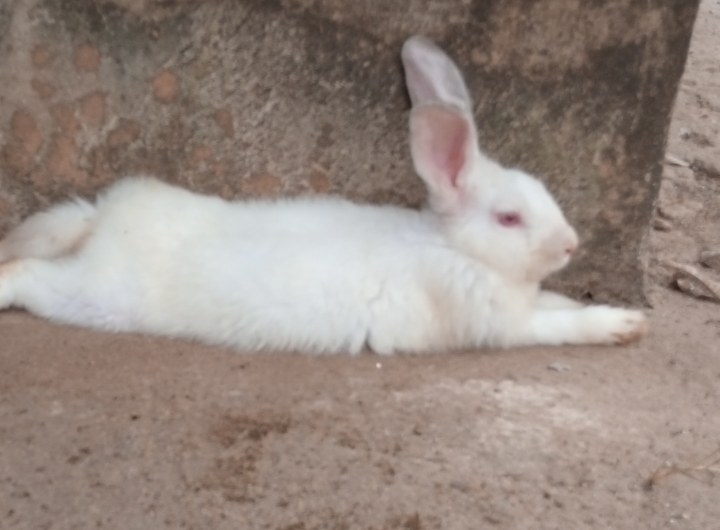
Known for their pure white fur and large size, New Zealand Whites have become popular worldwide for meat production and as show rabbits.
The New Zealand White rabbit is one of the most popular breeds in Nigeria.
Description of Physical Characteristics
These rabbits are known for their pure white fur and large, muscular bodies. They have bright red eyes and upright ears that stand out.
Distinctive Features to Look For
When identifying New Zealand Whites, pay attention to their:
- White fur,
- Bright red colored eyes,
- Their large size and muscular build,
- Arched back starting from the shoulders to the tailbone,
- Long straight ears.
2. Chinchilla
The Chinchilla rabbit is another common breed found in Nigeria.
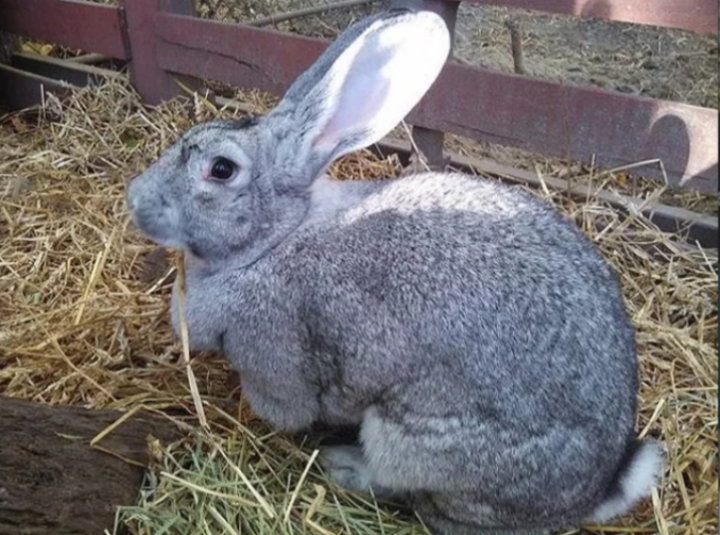
The Chinchilla rabbit breed originated in Europe, particularly in France and Belgium, in the late 19th century.
They were developed by crossing wild rabbits with domestic breeds to create a fur-bearing rabbit with a unique coat color resembling that of a chinchilla.
Description of Physical Characteristics
Chinchilla rabbits have a distinctive coat color that resembles the fur of a chinchilla. Their fur is a mix of black and gray, giving them a unique appearance. They have medium-sized bodies with rounded features.
Distinctive Features to Look For
When identifying Chinchilla rabbits, look for their:
- Unique fur coloration, which is a mix of black and gray,
- Their medium-sized bodies and rounded features,
- Dark brown eyes,
- Straight long ears.
3. Dutch Rabbit
The Dutch rabbit breed has its origins in the Netherlands, where it was developed in the 19th century.
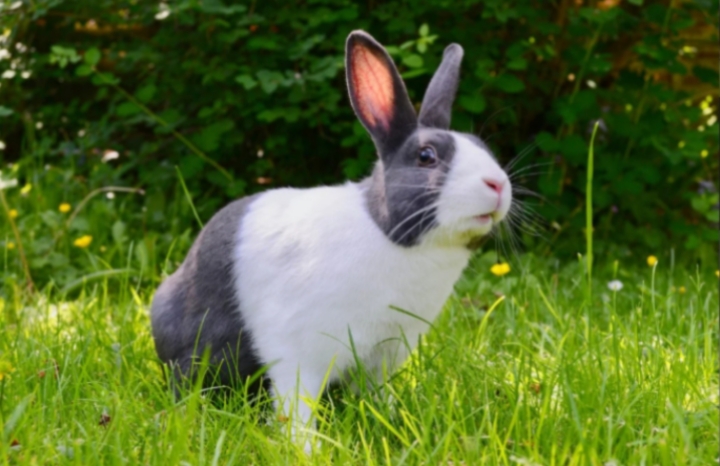
Dutch rabbits were bred for both meat and fur production initially but later gained popularity as show rabbits due to their distinctive coat pattern and interesting personality. These rabbits are easily recognizable by their coat pattern and markings.
Description of Physical Characteristics
These rabbits have a compact, rounded body shape with short, erect ears. Their most notable feature is their coat pattern, which consists of a solid-colored body with distinct white markings on the face, chest, and feet. The most common color combination is black and white, although other color variations exist, such as blue and white or chocolate/brown and white.
Distinctive Features to Look For
When identifying Dutch rabbits, focus on their:
- Unique coat pattern, which includes solid-colored bodies with white markings on the face, chest, and feet,
- Compact rounded body shape,
- Short and erect ears,
- Round face.
4. Hyla Rabbit
The Hyla rabbit breed is a relatively newer breed that originated in Europe. Developed through selective breeding, Hyla rabbits are known for their dense fur, as well as their friendliness.
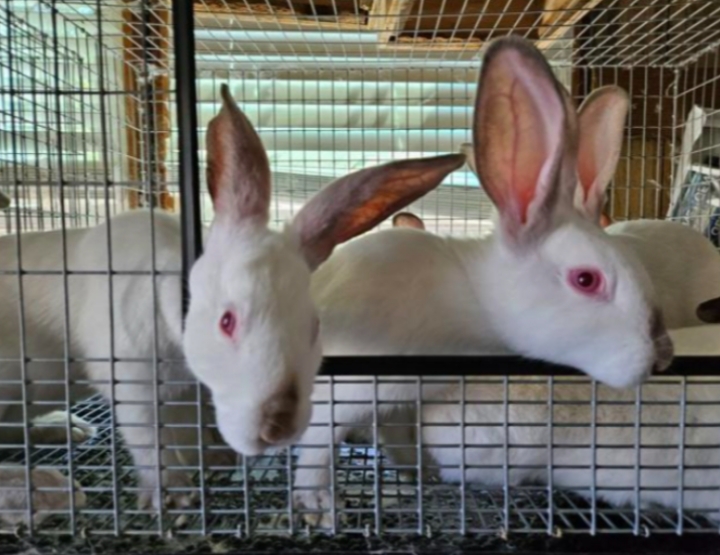
While their exact country of origin may vary, Hyla rabbits are now bred and raised in various parts of the world.
Description of Physical Characteristics
These rabbits have a distinctive appearance, with a medium-sized body and semi-arched back. They are known for their dense and plush fur, which comes in various colors, including white, black, gray, and brown. Hyla rabbits typically have partially round faces with bright, expressive eyes.
Distinctive Features to Look For
When identifying Hyla rabbits, pay attention to their:
- Medium-sized bodies and semi-arched backs,
- Their dense fur,
- Partially round faces,
- Bright red or pink eyes,
- Darker coloration on their noses,
- Long darker ears with a rounded tip.
Misconceptions About Hyla Rabbits
There’s a common misconception that Hyla rabbits are genetically modified breeds. However, this is not true. Hyla rabbits are actually a result of selective breeding rather than genetic modification.
Selective breeding involves intentionally crossing different rabbit breeds to achieve desired characteristics, such as fur quality, size, and temperament. While Hyla rabbits may have unique traits that result from selective breeding, they are not genetically modified in the sense of having their DNA altered in a laboratory setting.
5. Flemish Giant
The Flemish Giant rabbit breed originated in Belgium in the 16th century. Bred for their large size and meat production, Flemish Giants quickly gained popularity in Europe and later spread to other parts of the world.
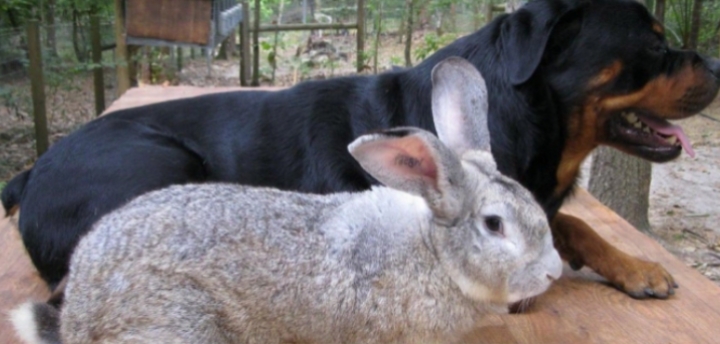
Despite their name, Flemish Giants are known for their gentle nature and make excellent pets in addition to being raised for meat.
The Flemish Giant is one of the largest rabbit breeds in the world.
Description of Physical Characteristics
These rabbits are massive, with a robust, muscular body and long, powerful legs. They have broad heads with thick, upright ears and large, expressive eyes. Flemish Giants are known for their dense, glossy fur, which comes in various colors, including gray, black, white, and blue.
Distinctive Features to Look For
When identifying Flemish Giants, pay attention to their:
- Enormous size and muscular build,
- Their broad heads,
- Thick long flappy ears,
- Large dark brown eyes,
- Partial curve starting from the middle of the back down to the tailbone.
Point of Note ! : Availability in Nigeria
It’s important to note that while the Flemish Giant is a popular breed in some parts of the world, it may not be readily available in Nigeria. Unfortunately, there have been reports of fraudulent activities where individuals claim to market Flemish Giants but are actually scammers.
Many people, including myself, have fallen victim to these scams, so it’s essential to exercise caution when purchasing rabbits, especially if they are advertised as Flemish Giants.
How to Identify Rabbit Breeds
1. Coat Color and Texture
Understanding the coat color and texture is crucial for identifying rabbit breeds.
The coat color and texture are like a rabbit’s fingerprint, providing important clues about its breed. For example, New Zealand Whites are easily recognized by their pure white fur, which is dense and plush to the touch. Chinchilla rabbits, on the other hand, have a distinctive coat color resembling that of a chinchilla, with a mix of black and gray fur that feels soft and velvety.
Each rabbit breed has its own unique color patterns. For instance, Dutch rabbits have solid-colored bodies with distinct white markings on their face, chest, and feet. These markings contrast sharply with their primary coat color, giving them a distinctive appearance. Additionally, Hyla rabbits come in various colors, such as white, black, gray, and brown, with dense and plush fur that varies in texture.
2. Ear Shape and Size
Rabbit breeds also vary in terms of ear shape and size, which can be used as distinguishing features.
The shape and size of a rabbit’s ears can vary significantly between breeds. For example, Dutch rabbits typically have short, upright ears that stand out, while Hyla rabbits have medium-sized ears that are rounded at the tips.
By observing the shape and size of a rabbit’s ears, you can make educated guesses about its breed. For instance, breeds with upright ears, such as the New Zealand White, have ears that stand tall and alert. In contrast, breeds with medium-sized ears that are rounded at the tips, like the Hyla rabbit, have a distinct appearance.
3. Body Size and Shape
Differences in body size and shape are also important factors in identifying rabbit breeds.
Some breeds, such as the Flemish Giant, are known for their large, muscular bodies and elongated shapes, while others, like the Dutch, have compact, rounded bodies. Additionally, breeds with rounded faces and muscular builds, such as the New Zealand White, have a distinct appearance that sets them apart from other breeds.
By considering factors like body size, shape, and proportions, you can narrow down the potential breeds of a rabbit. For example, breeds with rounded faces and back arcs, like the Dutch and New Zealand White, are easily distinguishable from breeds with elongated shapes.
Conclusion
In conclusion, this article has explored the various aspects of identifying rabbit breeds, emphasizing the importance of understanding characteristics such as coat color and texture, ear shape and size, and even eye color.

By paying attention to these distinguishing features, rabbit breeders in Nigeria can accurately identify different breeds and make informed decisions regarding breeding and management.
We encourage readers to apply the knowledge gained from this article to their own breeding practices. By understanding the unique characteristics of each breed and selecting rabbits that meet specific breeding goals, breeders can contribute to the development and growth of the rabbit industry in Nigeria.
In closing, let’s continue to learn, share knowledge, and work together to promote the sustainable growth of rabbit farming in Nigeria.







How much does it cost.
I have over 60 rabbits but I don’t know the breeds your piece has educated me about it. Thanks